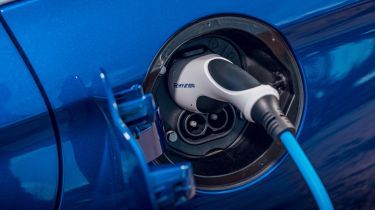Hyundai Ioniq Electric (2016-2022) range, battery & charging
The facelifted 2019 Hyundai Ioniq Electric got a larger battery, giving it a longer driving range than before
| Range | Wallbox charge time | Rapid charge time |
|---|---|---|
| 193 miles | 6hrs 5mins (0-100%, 7.4kW) | 47mins (10-80%, 50kW) |
The most up-to-date version of the Ioniq Electric, introduced in late 2019, features a 38.3kWh battery, replacing the 28kWh unit in the previous iteration of the car. The new battery brought with it a boost in range, while faster charging ability means charging times haven’t ballooned.
Hyundai Ioniq Electric range
Officially, the Ioniq Electric returns 193 miles from a charge, up from the previous version's 174 miles. That doesn’t sound like an enormous jump given the increase in battery size, however the pre-facelift Ioniq Electric was tested using the now-defunct NEDC procedure. The more stringent WLTP regime in use today is more likely to reflect what you’ll achieve in the real world.
With 193 miles of range, the Ioniq Electric falls short of making our list of the longest-range electric cars, but it'll go more than far enough to satisfy most drivers; only regular long-distance users will really have to think twice about whether the Ioniq Electric will suit their needs. And if it doesn't, there's always the longer-range Hyundai Kona Electric to consider.
Charging time
The Ioniq Electric’s on-board charger was improved by the facelift, with speed rising from 6.6 to 7.2kW. From a 50kW rapid charger – often found at motorway service stations and an increasing number of ‘destination’ car parks – the Ioniq Electric's battery will get to 80% capacity in less than an hour. Meanwhile, a full charge from a 7kW home wallbox will take around six hours; more than fast enough for a full top-up overnight.
There’s also the option of charging from a domestic three-pin socket: however this will take an estimated 19 hours, so is only really viable as a last resort. The Ioniq Electric is equipped with a CCS socket, which means it'll also accept a Type 2 plug for charging at home. There’s just enough space to store a cable under the boot floor, which is a more practical solution than the storage bag that Hyundai provides with the car.
